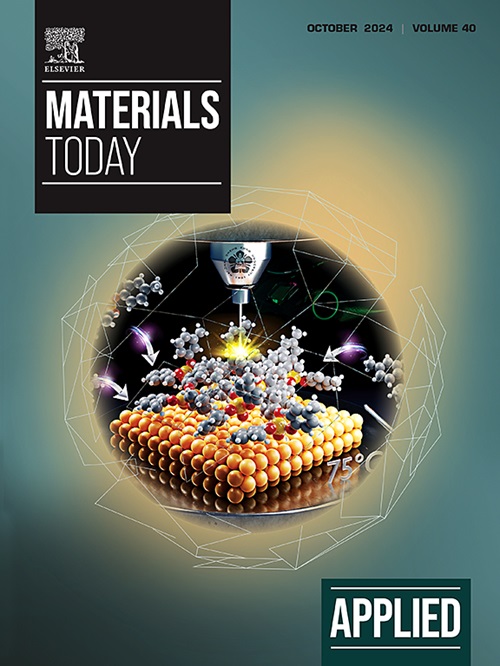被动式日间辐射冷却聚合材料:结构设计、制造和应用
IF 6.9
2区 材料科学
Q1 MATERIALS SCIENCE, MULTIDISCIPLINARY
引用次数: 0
摘要
辐射冷却(RC)技术通过反射太阳光,并通过红外辐射将热量从大气透明窗口散发到寒冷的外层空间,从而在不消耗额外能源的情况下实现被动冷却。它为应对当前能源短缺和环境压力的挑战提供了一个绝佳的替代方案。虽然许多材料和结构都显示出强大的遥控性能,但具有固有的强大红外辐射特性的聚合物,因其具有可设计化学键和基团的多样化结构、大规模生产能力以及易于制造成遥控设备,在遥控领域展现出巨大的潜力和可能性。本综述旨在全面总结利用聚合物进行日间被动辐射冷却的最新进展。它将探讨聚合物结构与 RC 性能之间的关系,讨论实现高 RC 效率的设计原则,研究冷却器用聚合物材料的生产,并系统回顾和讨论 RC 聚合物的广泛应用场景。最后,本综述还将强调 RC 聚合物的未来发展前景。本文章由计算机程序翻译,如有差异,请以英文原文为准。
Passive daytime radiative cooling polymeric materials: Structure design, fabrication, and applications
Radiative cooling (RC) technology achieves passive cooling without consuming additional energy by reflecting sunlight and dissipating heat through the atmospheric transparent window via infrared radiation into the cold outer space. It presents an excellent alternative to address the current challenges of energy shortage and environmental stress. While numerous materials and structures demonstrate robust RC performance, polymers, with their inherent and strong infrared radiation characteristics, exhibit significant potential and possibilities in RC due to their diverse structures with designable chemical bonds and groups, large-scale production capabilities, and ease of manufacturing into RC devices. This review aims to provide a comprehensive summary of recent advances in utilizing polymers for passive daytime radiative cooling. It will explore the relationship between polymer structure and RC performance, discuss design principles for achieving high RC efficiency, examine the production of polymeric materials for coolers, and systematically review and discuss the broad application scenarios of RC polymers. Finally, this review will highlight future perspectives for the development of RC polymers.
求助全文
通过发布文献求助,成功后即可免费获取论文全文。
去求助
来源期刊

Applied Materials Today
Materials Science-General Materials Science
CiteScore
14.90
自引率
3.60%
发文量
393
审稿时长
26 days
期刊介绍:
Journal Name: Applied Materials Today
Focus:
Multi-disciplinary, rapid-publication journal
Focused on cutting-edge applications of novel materials
Overview:
New materials discoveries have led to exciting fundamental breakthroughs.
Materials research is now moving towards the translation of these scientific properties and principles.
 求助内容:
求助内容: 应助结果提醒方式:
应助结果提醒方式:


